Whinchat, Paapje, Braunkelchen, Cartaxo-nortenho, Tarabilla Norteña
Spotted on our property Monte Horizonte in the Alentejo Region of Portugal. Whinchat sound
The Whinchat, Saxicola rubetra, is a small European passerine bird. Formerly considered a member of the thrush family (Turdidae), it is now more generally considered to be an Old World flycatcher (Muscicapidae). It, and similar thrush-like Muscicapidae species, are often called chats.
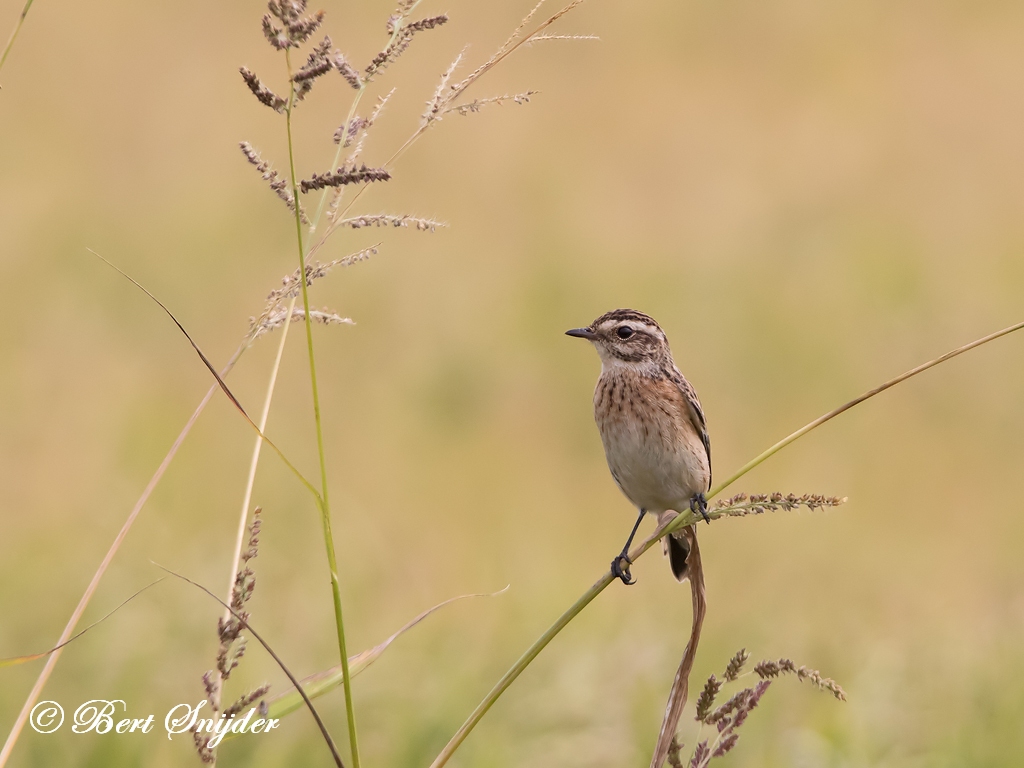
Its scientific name means “reddish rock-dweller”, in reference to its habitat and overall coloration. Saxicola derives from Latin saxum (“rock”) + incola (“inhabitant”, “one who dwells in a certain place”). rubetra is Latin for “colored reddish” or “reddish-hued”.
Adult femaleThe Whinchat is similar in size to its relative the European Robin (Erithacus rubecula). Both sexes have brownish upperparts, a yellowish rump, a buff throat and breast, a whitish belly, a blackish tail with white bases to the outher rectrices. The male in breeding plumage has blackish head sides almost encircled by a strong white supercilium and malar stripe and white wing patches.
The female is duller overall, in particular having pale brown head sides and a buff supercilium, malar stripe and wing patches. Males in nonbreeding plumage and immatures are similar.
The male has a whistling, crackly but soft song, consisting mainly of the tell-tale phrase fü-chack-chack. Its call is the chack noise typical for chats, or a soft whistle. On the wintering grounds, it often calls but rarely sings.
S. rubetra is a migratory insectivorous species breeding in open rough pasture or similar uncultivated grass- or shrubland in Europe east to the Ural Mountains approximately. Bracken (Pteridium) stands on rock-strewn ground are also a favorite habitat of this species. It nests in tussocks. The birds like to perch on elevated spots such as telephone wires, from where they make sallies to catch flying insects.
They winter in northern sub-Saharan Africa; they arrive in Western Africa at the start of the dry season. Molt of the remiges does not usually take place in winter quarters, but young birds may replace their first set of remiges before their first migration back to the breeding grounds.
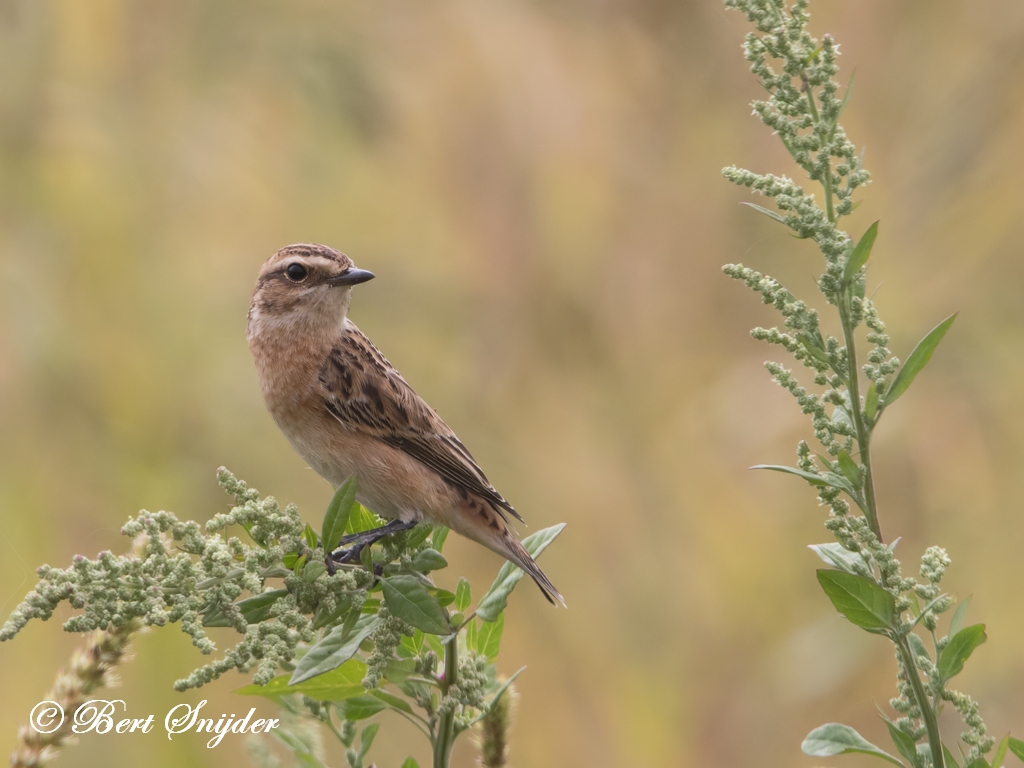
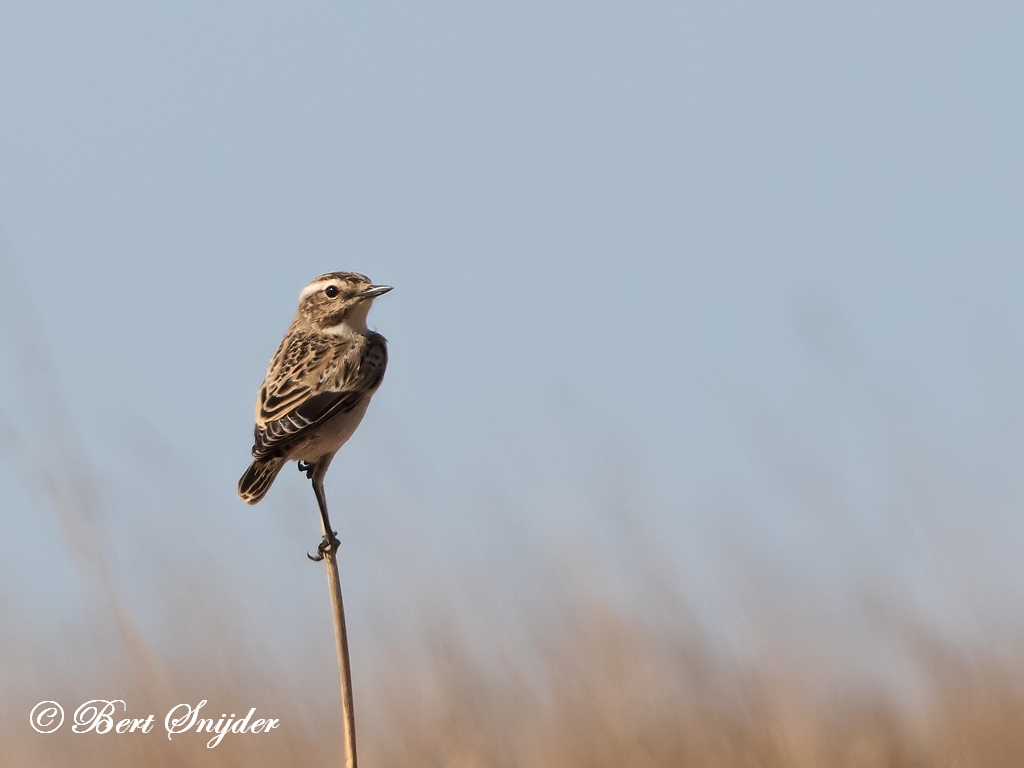
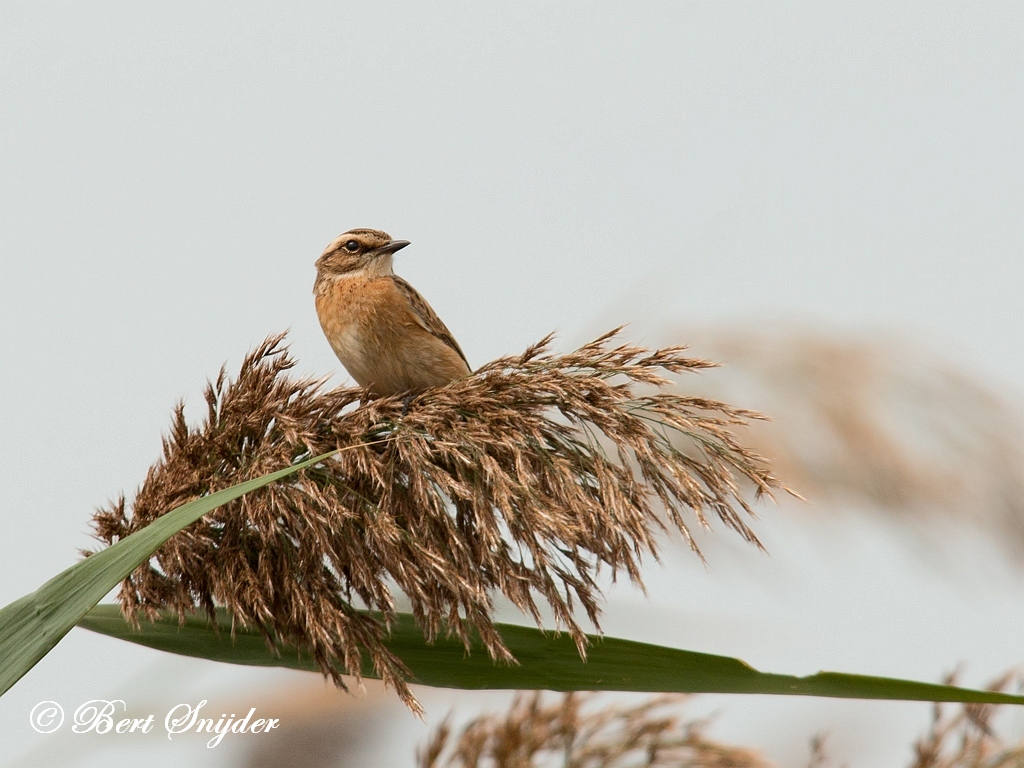
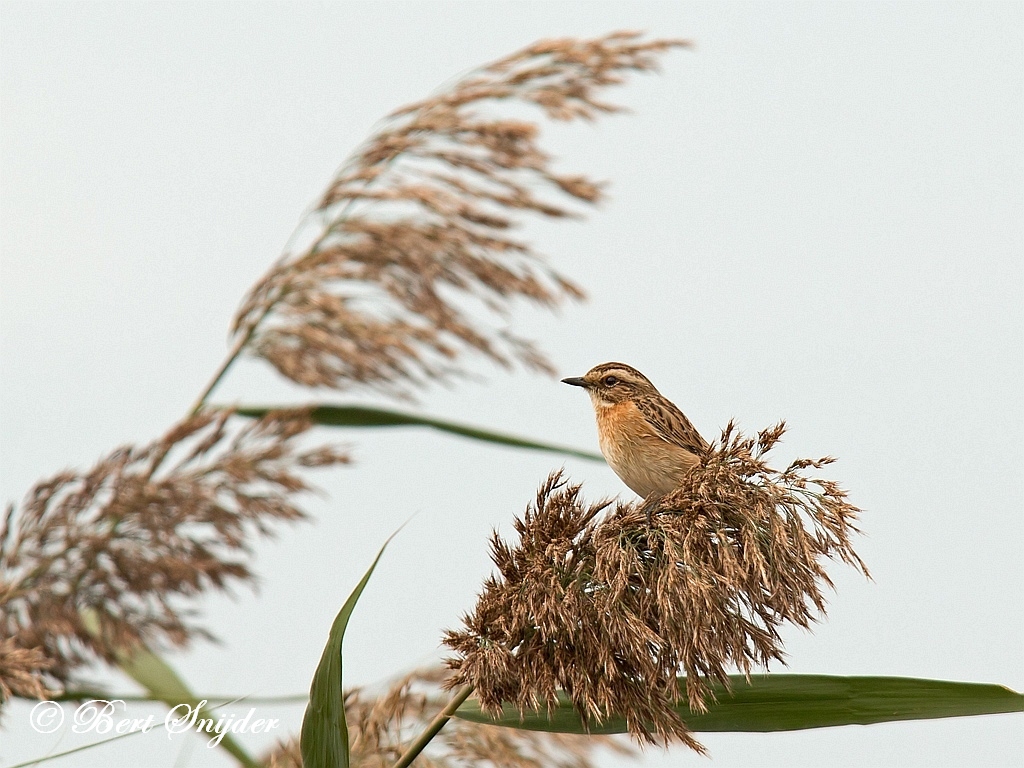
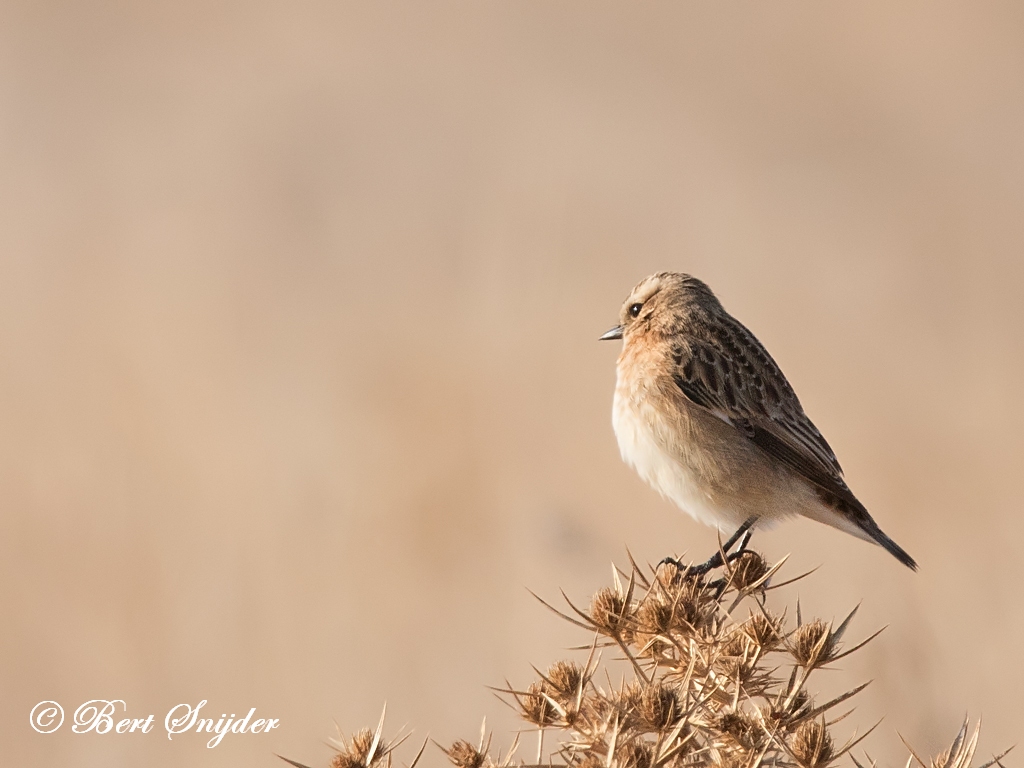


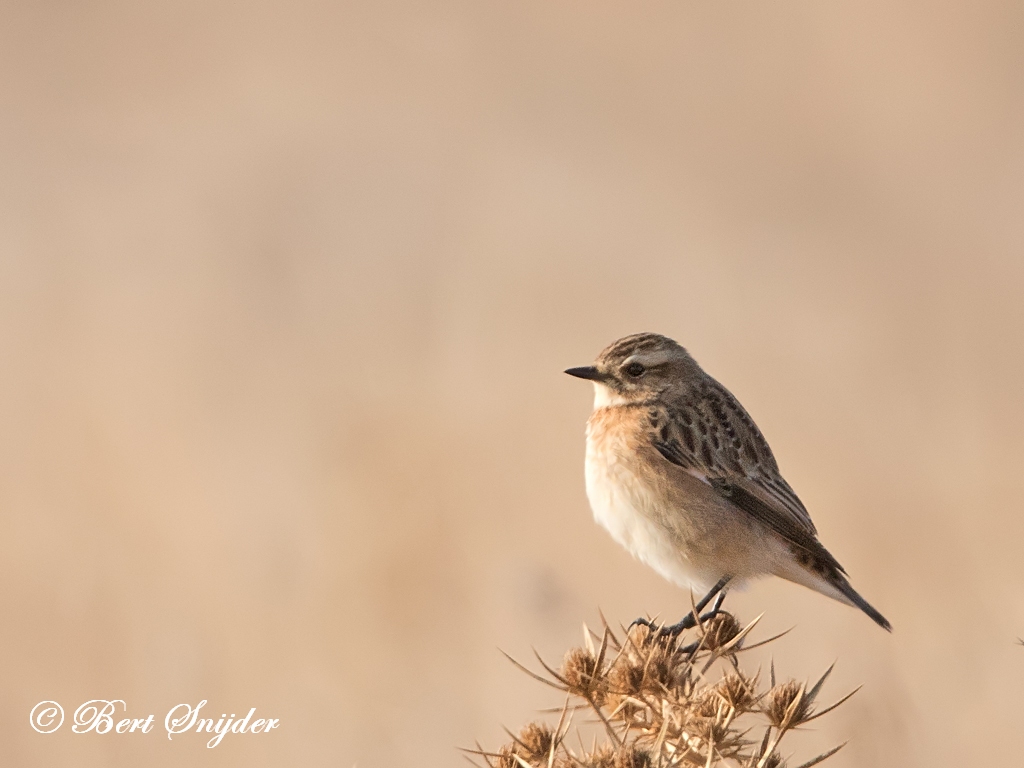
Other synonyms:
Afrikaans: Europese Bontrokkie
Asturian: Bichu Gorbizu, Birchu Berizu
Breton: Ar strakig ruz, Bistrakig-rous
Catalan: Bitxac rogenc, Vitrac barba-roig
Catalan (Balears): Vitrac barba-roig
Czech: Brambornícek hnedý
Welsh: Clap yr eithin, Clef yr eithin, Clochdar eithin, Clochdar yr eithin, Clochder yr eithin, Crec yr eithin
Danish: Bynkefugl
German: Braunkehlchen
English: European Whinchat, Marsh Bushchat, Whinchat
Spanish: Tarabilla Norteña
Estonian: Kadakatäks
Basque: Bitxac rogenc , Pitxartxar nabar, Pitxartxar nabarra
Finnish: Pensastasku
Faroese: Reyðstólpa
French: Tarier des prés, Tarier d’Europe, Traquet des prés, Traquet tarier
Irish: Caislín Aitinn
Gaelic: Gocan, Gocan Conaisg
Galician: Bitxac rogenc , Chasco norteño
Manx: Eean yn aittin
Hungarian: Rozsdás csaláncsúcs, Rozsdás csuk
Icelandic: Vallskvetta
Italian: Stiaccino
Japanese: mamijironobitaki, Mamijiro-nobitaki
Cornish: Chekker eythyn
Latin: Saxicola rubertra, Saxicola rubetra, Saxicola rubetra spatzi
Dutch: Paap, Paapje
Norwegian: Buskskvett
Polish: Pleszka, poklaskwa
Portuguese: cartaxo nortenho, Cartaxo-nortenho
Romansh: Puppenbrin
Russian: Lugovoy Chekan
Sardinian: Sartiarellu
Scots: Gocan
Northern Sami: Miesttarásttis
Slovenian: repaljšcica
Albanian: Ceku vetullbardhë
Serbian: obicna travarka
Swedish: Buskskvätta
Swahili: Mhozo Mchirizi-mweupe
Travel Birdwatching Holiday Alentejo, Vacation Portugal for birders guided birdwatching Tours and Trips.